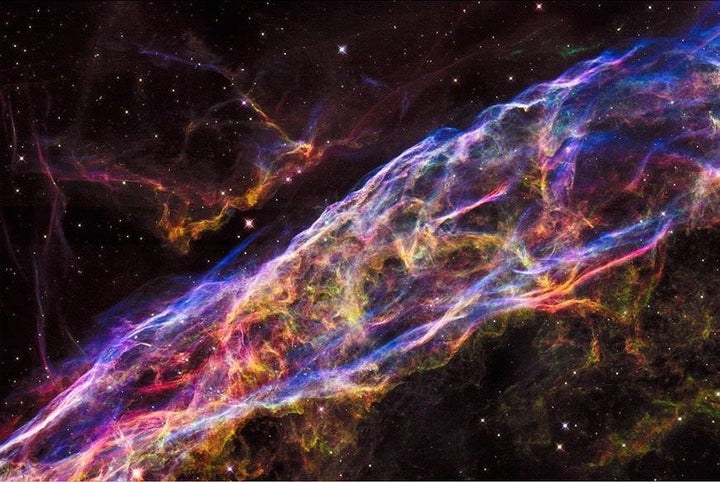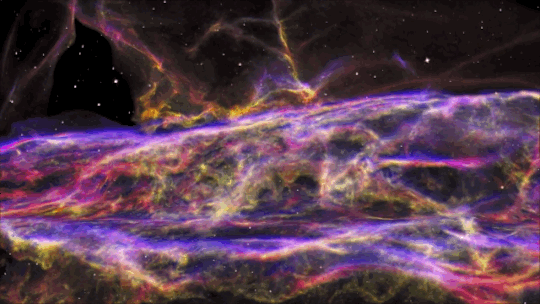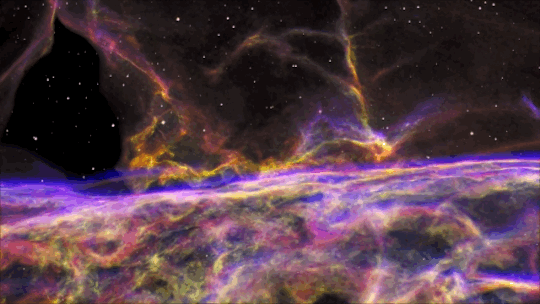
NASA has released detailed images of a star that exploded approximately 8,000 years ago, and it looks like neon silk.
The Veil Nebula, captured by the Hubble Space Telescope, gets its name from the intricate, lace-like filamentary structures that make up its body. It was first observed by astronomer William Herschel in 1785 and floats about 2,100 light-years away from Earth in the constellation known as Cygnus, or the Swan.
The star that exploded to create the Veil Nebula was once 20 times larger than our sun, according to NASA.

Various filament and "rope-like" structures were created by the collision of the blast wave and the cavity wall of the nebula, which is made up of gas and dust. The bright red parts of the nebula come from the glow emitted by hydrogen.
The green and blue are from sulfur and oxygen respectively. It is brightest around the parts where the blast encountered obstruction from denser materials, according to NASA.
Despite being incredibly bright, the Veil Nebula is difficult for astronomers to view because it is spread over a massive area -- it's 110 light-years wide. The close-up pictures captured by the Hubble Space Telescope hone in on a fraction of the space the nebula covers. The image, which is a combination of six different pictures layered together, shows a part of the nebula that is roughly two light-years across.

The Hubble Space Telescope, which was launched in 1990, takes highly detailed visible-light pictures in space and is versatile due to its ability to observe ultraviolet, visible and infrared light.
Astronomers are now comparing these new photographs with ones taken in 1997, to determine how the nebula has expanded.
